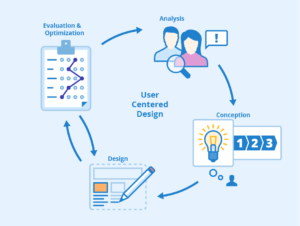Website Redesign SEO Checklist – Retain and Improve Your SEO

Website Redesign SEO Checklist Retain and Improve Your SEO
Introduction
In the ever-evolving digital landscape, a website’s success hinges on its ability to adapt, grow, and remain visible to its target audience. If you’re planning a website redesign, it’s crucial to ensure that your SEO (Search Engine Optimization) efforts not only retain their effectiveness but also improve. This SEO checklist will guide you through the essential steps to safeguard and enhance your SEO during the redesign process.
-
Conduct a Comprehensive SEO Audit
Before making any changes, start by conducting a thorough SEO audit of your current website. Identify your top-performing pages, high-ranking keywords, and backlinks. This baseline data will help you measure the impact of your redesign.
-
Set Clear Objectives
Define your redesign goals. Are you aiming to improve user experience, boost conversion rates, or simply refresh the design? Understanding your objectives will guide your decisions and ensure that SEO aligns with your broader goals.
-
Maintain URL Structure
Preserve your existing URL structure as much as possible. Changing URLs without proper redirects can lead to a loss of valuable SEO rankings and disrupt user experiences. Implement 301 redirects for any modified URLs.
-
Optimize for Mobile-First Indexing
With Google’s emphasis on mobile-first indexing, ensure that your redesigned website is responsive and mobile-friendly. This is not only crucial for SEO but also for user satisfaction.
-
Keep High-Quality Content
Maintain and enhance your existing high-quality content. Review and update outdated information, improve readability, and add relevant keywords naturally. Fresh and valuable content can boost your SEO efforts.
-
Optimize Images and Media
Compress and optimize images and media files to improve page loading speed. Faster-loading pages are favored by search engines and provide a better user experience.
-
Implement Proper Header Tags
Ensure that your redesigned website uses proper header tags (H1, H2, H3, etc.) to structure content logically. This not only aids in SEO but also enhances readability.
-
Check for Broken Links
Perform a comprehensive check for broken links and fix them promptly. Broken links can negatively impact user experience and SEO rankings.
-
Focus on Page Speed
Page speed is a crucial SEO factor. Utilize tools like Google PageSpeed Insights to identify and rectify issues that may slow down your website.
-
Create an XML Sitemap
Generate a new XML sitemap for your redesigned website and submit it to search engines. A sitemap helps search engine crawlers index your site efficiently.
-
Maintain Your Robots.txt File
Ensure that your robots.txt file is up to date and allows search engine bots to crawl and index your site correctly. Avoid blocking important pages unintentionally.
-
Test Site Performance
Conduct thorough performance testing, including usability and functionality checks. Ensure that your website works seamlessly across different browsers and devices.
-
Monitor Site Analytics
Set up or continue using analytics tools like Google Analytics. Track your website’s performance post-redesign, monitor traffic, and make necessary adjustments based on user behavior.
-
Secure Your Website
Website security is a ranking factor for search engines. Ensure that your redesigned site is secure with HTTPS and protect against security vulnerabilities.
-
Engage in Comprehensive Testing
Before launching your redesigned website, engage in rigorous testing, including cross-browser and cross-device compatibility, to eliminate any issues that could impact SEO and user experience.
-
Plan for Post-Launch SEO
Have a post-launch SEO strategy in place. Monitor your website’s performance, continue to produce fresh content, and adapt to changes in search engine algorithms.
Conclusion
A website redesign is an opportunity to enhance your online presence, but it should not come at the cost of your existing SEO efforts. By following this SEO checklist, you can ensure that your website retains and even improves its SEO during the redesign process. Remember that SEO is an ongoing effort, so continue to monitor and adapt your strategy to maintain and enhance your website’s visibility and effectiveness in search engine rankings.
For More Related Articles Browse Our Website Blogster.pk
For social Connection You can also Visit and follow our Social media Platforms
Facebook , Instagram, Linkedin, Pinterest, Quora, Twitter, Youtube.








